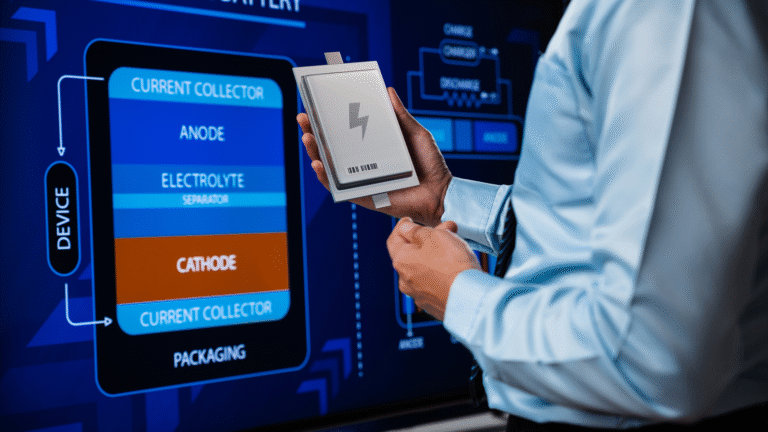As Australia’s electric vehicle (EV) landscape rapidly evolves, battery swapping has emerged as a bold alternative to traditional charging. While still in its infancy locally, this technology—where depleted batteries are exchanged for fully charged ones in minutes—could help overcome several barriers to EV adoption.
Could battery swapping be the key to wider EV uptake across Australia? Let’s explore how it works, who’s leading the charge, and what it could mean for drivers, fleets, and infrastructure.
Table of Contents
- What Is Battery Swapping?
- How It Works: Step-by-Step
- Benefits Over Traditional Charging
- Key Players and Global Momentum
- Is Battery Swapping Viable in Australia?
- Challenges and Considerations
- What It Means for Fleets and Urban Mobility
- Future Outlook
- Conclusion
1. What Is Battery Swapping?
Battery swapping is an EV refuelling method where a depleted battery is removed and replaced with a fully charged one—typically at an automated swap station. The process usually takes under five minutes, making it comparable to a traditional fuel stop.
This contrasts with plug-in charging, where vehicles must be tethered for anywhere from 30 minutes (fast charging) to several hours (home charging).
2. How It Works: Step-by-Step
A typical battery swap process involves:
- The EV arriving at a battery swap station
- The vehicle being aligned onto a platform
- An automated system removing the used battery
- A fully charged battery being installed
- The car being ready to drive off in minutes
Drivers often subscribe to a battery-as-a-service (BaaS) model, paying for usage rather than owning the battery outright.
3. Benefits Over Traditional Charging
Battery swapping offers a number of key advantages:
- ⏱️ Ultra-fast refuelling time
- 🔋 Reduced upfront EV cost (if battery is leased)
- 🚫 No need for high-power grid connections at every stop
- 🚗 Greater uptime for fleet vehicles and taxis
- 🌡️ Easier thermal management and centralised battery maintenance
It also helps decouple EV usage from charging infrastructure, which is critical in urban areas with limited parking or in apartment complexes.
4. Key Players and Global Momentum
While China leads the battery swapping race—with NIO, Geely, and Aulton establishing vast networks—interest is growing elsewhere:
- NIO has completed millions of swaps and operates over 2,000 swap stations globally
- Gogoro and Hero MotoCorp have rolled out battery swap stations for electric two-wheelers in Asia
- Ample in the US has trialled modular swap stations with ride-share partners
Australia has yet to see widespread deployment, but a handful of trials and startups are beginning to explore the model.
5. Is Battery Swapping Viable in Australia?
Battery swapping faces several hurdles here—but it also holds promise, particularly in:
- Ride-share and delivery fleets with high daily mileage
- Taxis and last-mile logistics operators needing rapid turnaround
- Regional centres where public charging is limited
- Commercial vehicles (like utes or vans) that can’t afford downtime
With the right vehicle compatibility and business models, urban hubs like Sydney, Melbourne, and Brisbane could serve as ideal testing grounds.
6. Challenges and Considerations
Before battery swapping becomes mainstream in Australia, a few key issues need to be addressed:
- 🔧 Vehicle standardisation: Swapping only works if multiple models use compatible battery packs
- 💰 High upfront cost of building swap stations
- ⚖️ Regulatory clarity on battery leasing, safety, and second-life reuse
- 🧭 Public awareness and trust in the tech
Without a concerted national or state-level push, rollout will likely be limited to niche commercial applications for now.
7. What It Means for Fleets and Urban Mobility
Battery swapping could transform the economics of operating EV fleets in Australia. For high-utilisation vehicles like couriers, buses, and taxis, the ability to “refuel” in minutes could reduce downtime and increase efficiency.
Operators could also benefit from:
- Lower battery maintenance responsibilities
- Centralised battery health monitoring
- Scalable charging operations at swap hubs
It also opens possibilities for vehicle designs that prioritise passenger or cargo space without needing to integrate large fixed batteries.
8. Future Outlook
While unlikely to replace plug-in charging across the board, battery swapping could serve as a vital complement—particularly in sectors where time is money. As Australia’s EV ecosystem matures, we may see:
- Pilot programs in metro areas targeting fleet operators
- Growth in two-wheeler or micro-EV swapping schemes
- Private-public partnerships to seed early infrastructure
Like fast charging a decade ago, battery swapping may start slow but evolve quickly—especially if government incentives and vehicle OEMs align.
9. Conclusion
Battery swapping isn’t a silver bullet, but it’s a promising piece of the EV puzzle. For Australia, it offers a path to faster, more flexible EV refuelling—especially in dense urban areas or for high-mileage operators. With the right technology, regulation, and investment, it could play a key role in shaping the next phase of the country’s electric mobility transition.
Battery swapping is emerging as a game-changer for EVs. Explore how this fast, flexible charging alternative could reshape Australia’s electric vehicle landscape—especially for fleets and city drivers.
